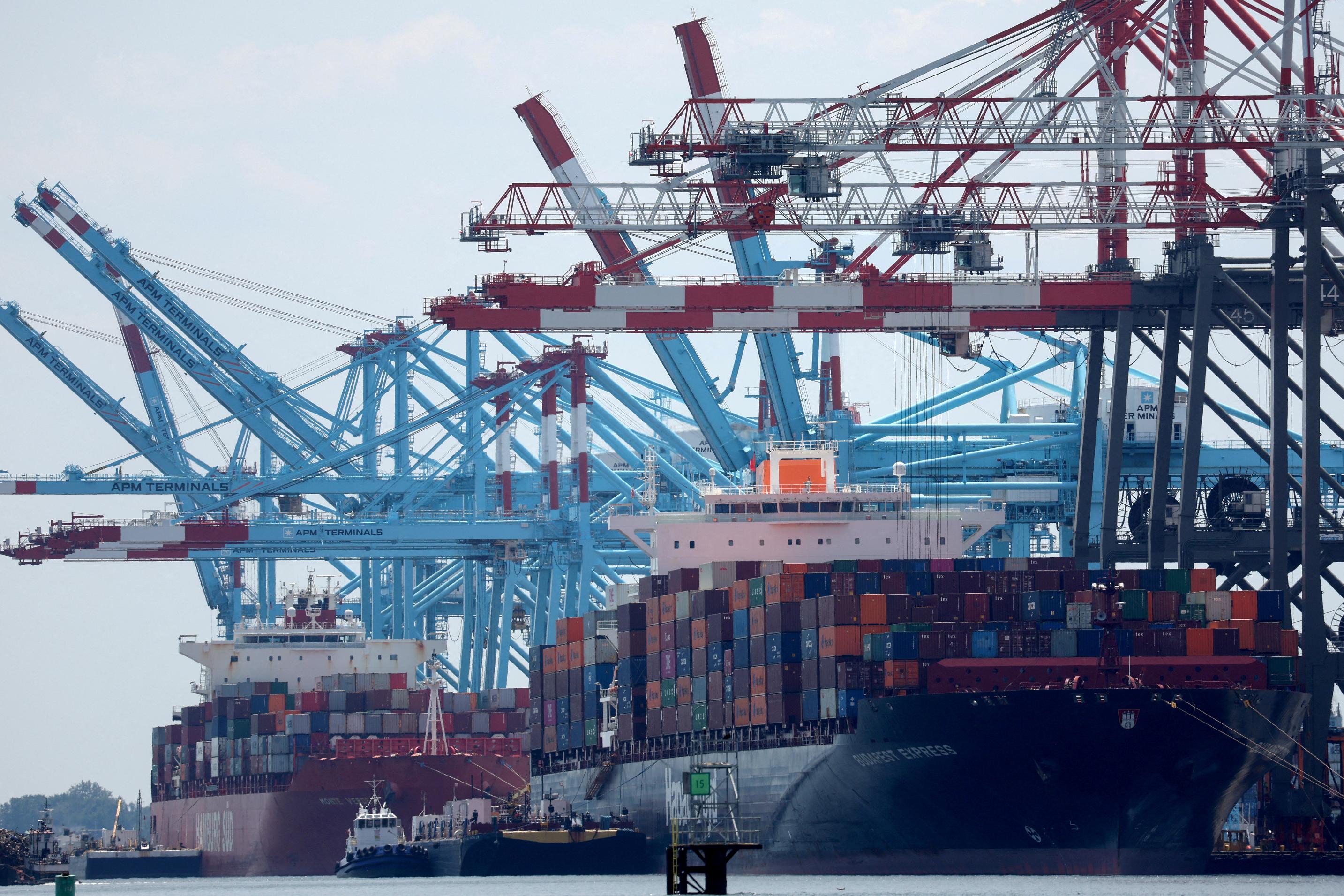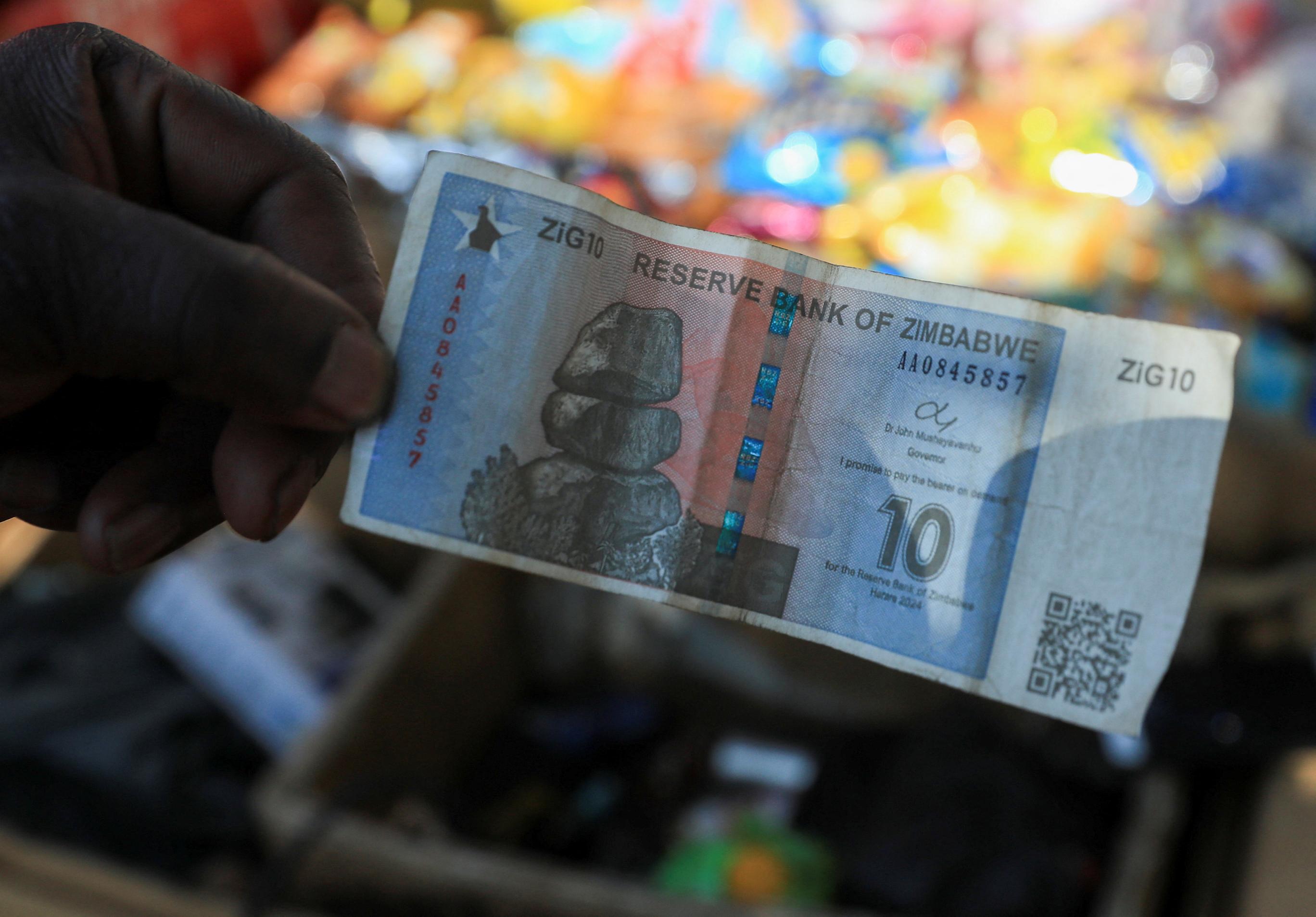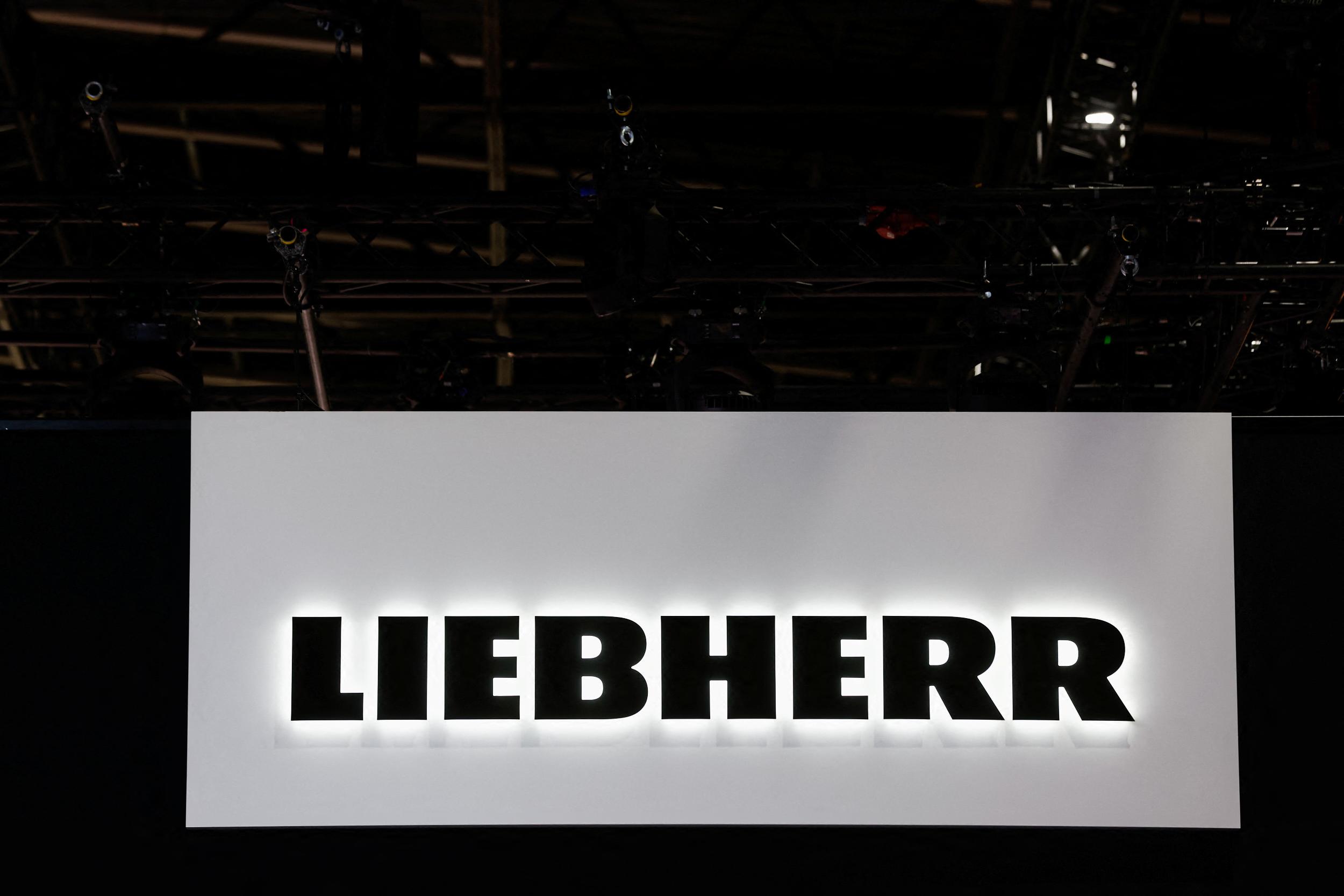
2024-09-27 12:12
Oct 4 (Reuters) - U.S. East Coast and Gulf ports resumed operations after unionized dockworkers reached a tentative labor agreement with an employer group for a new contract, ending a three-day strike. The agreement, which was announced on Thursday, includes a wage hike of around 62% over six years and covers about 45,000 members. Here's a brief rundown of the events leading up to the deal: May 13, 2024 The International Longshoremen's Association (ILA) and the United States Maritime Alliance (USMX) say they will begin bargaining after May 17 with the goal of forging a new deal before the six-year contract expires on Sept. 30. June 10, 2024 The ILA halts negotiations amid disputes related to automation, after discovering that operator APM's terminals and container shipping company Maersk Line were using an Auto Gate system that processes trucks without labor. June 11, 2024 The USMX says some issues will require further conversation between the local parties, adding that it looks forward to re-engage with the bargaining committee. July 12, 2024 Harold Daggett, ILA's president and chief negotiator, says the threat of an Oct. 1 strike is growing after the violation of its contract by some USMX members, which caused it to cancel negotiations earlier. Aug. 23, 2024 The USMX says it has been unable to secure a meeting with the ILA to resume negotiations. Sept. 5, 2024 Nearly 300 ILA delegates end their two-day wage scale meetings with unanimous support for President Daggett's call for an Oct. 1 strike if an agreement is not reached. Sept. 23, 2024 The ILA says it has held multiple conversations with the USMX in recent weeks and adds that a stalemate remains over wages, with the employer group continuing to offer "an unacceptable wage increase package". Sept. 24, 2024 The White House says it will not try to broker a deal between the two parties. Sept. 25, 2024 Agriculture groups urge the White House to act to avert the potential strike. Sept. 26, 2024 The USMX files an unfair labor practice charge with the National Labor Relations Board to bring ILA back to the bargaining table. Sept. 29, 2024 President Joe Biden says he did not intend to intervene to prevent a port strike. Sept. 30, 2024 The USMX raises its offer, says it would increase wages by nearly 50%, triple employer contributions to employee retirement plans and strengthen healthcare options. It also requests an extension of the current master contract to continue bargaining. Oct. 1, 2024 The ILA starts strike at ports up and down the U.S. East Coast. Oct. 3. 2024 The ILA and USMX reach tentative agreement for a new contract with 62% wage hike over six years. Sign up here. https://www.reuters.com/world/us/strike-looms-us-east-coast-gulf-mexico-ports-2024-09-27/

2024-09-27 11:42
LONDON, Sept 27 (Reuters) - Leading mining companies are struggling to balance investor expectations for hefty returns with paying the necessary premiums to buy pure play copper companies as global demand for the metal sends valuations soaring. Big diversified miners including Rio Tinto (RIO.L) , opens new tab, (RIO.AX) , opens new tab, BHP Group (BHP.AX) , opens new tab and Glencore (GLEN.L) , opens new tab, pressured by a slowdown in global economic growth and falling commodity prices, are watching rival copper producers gradually grow beyond their reach, with shares benefiting from the metal's robust outlook. While shares of Rio, BHP and Glencore have slumped between 10% and 15% this year, the valuations of pure play copper producers including Freeport-McMoRan (FCX.N) , opens new tab, Ivanhoe Mines (IVN.TO) , opens new tab and Teck Resources (TECKb.TO) , opens new tab have risen, even as benchmark copper prices retreated after hitting a record high above $11,000 a metric ton in May this year. "Engaging in large copper deals makes the boards (of directors) nervous when fluctuations in other commodities, like iron ore and coal, are likely to persist," a banker, who has worked on several mining transactions, told Reuters. "And since copper companies have performed better, diversified miners find it challenging to pay massive premiums when their share prices have dropped more in comparison," the banker added. BHP, Rio Tinto and Glencore trade at multiples of five to six times earnings, whereas Teck, Freeport, and Ivanhoe are at nearly double that, the banker said. Copper, used in power and construction, is set to benefit from burgeoning demand from the electric vehicle sector and new applications such as data centres for artificial intelligence. The long-term outlook for the metal isn't always factored in by investors in the bigger miners when they offer higher premiums to try and seal a deal, said Richard Blunt, a partner at law firm Baker McKenzie. "Investors only want to know what's going to happen to the value of their company over the next three to six months, and that's a major problem," Blunt said. In the past three years, thanks to higher commodity prices most miners have paid record dividends, which - although popular - are seen as eroding the industry's ability to generate production growth via exploration, mine development, or consolidation. COSTLY HISTORY Investors have good reason to keep a wary eye on management's dealmaking ambitions as most miners have a corporate history littered with failed and sometimes costly acquisitions. Rio Tinto's $38 billion deal for Alcan in 2007 commanded a 65% premium, and subsequent writedown, while BHP's $12 billion deal for U.S. onshore shale oil and gas assets in 2011 sold back for $10 billion in 2018. Some management teams have tried to return to M&A, but with no or only partial success. "There's the pure financial aspect, which is the resistance of existing shareholders to significant premia," said Michel Van Hoey, senior partner at McKinsey & Company. "If you look historically, 10 years ago, we have gone through a significant wave where some companies probably overpaid for their transactions. Now, executives have become a bit more conservative," he added. Glencore eventually settled for 77% of Teck's steelmaking coal assets after its $23 billion bid for all of the Canadian miner was spurned, while BHP was forced to walk away from Anglo American (AAL.L) , opens new tab even after revising its initial bid two times to entice the smaller rival. Both BHP and Glencore initially made all-share proposals for their target companies. "In past cycles, companies such as Rio Tinto engaged in substantial cash acquisitions at peak times, only to see prices crash, leaving them looking imprudent," a mining investor said. "Today, the trend has shifted towards stock-based deals to mitigate risks, but that is more expensive, especially at a time when commodity prices are coming down." Sign up here. https://www.reuters.com/markets/commodities/mining-industry-struggles-with-valuation-gap-amid-shift-copper-2024-09-27/

2024-09-27 11:41
MUMBAI, Sept 27 (Reuters) - India's foreign exchange reserves (INFXR=ECI) , opens new tab continued to rise for a sixth straight week to a record high of $692.3 billion as of Sept. 20, data from the central bank showed on Friday. The reserves rose by $2.84 billion in the reporting week, after having risen by a total of $19.3 billion in the prior five weeks. Changes in foreign currency assets are caused by the Reserve Bank of India's intervention in the foreign exchange market as well as the appreciation or depreciation of foreign assets held in the reserves. The RBI intervenes on both sides of the forex market to prevent undue volatility in the rupee. In the period for which the forex reserves data pertains, the rupee had logged its best week of 2024, aided by a larger-than-usual 50-basis-point rate cut by the U.S. Federal Reserve as well as inflows into local stocks and bonds. The rupee had jumped to a more-than-two-month-high of 83.4850 last week and gained nearly 0.4% week-on-week. Forex reserves also include India's reserve tranche position in the International Monetary Fund. The domestic currency settled at 83.70 on Friday, and slipped 0.1% week-on-week. FOREIGN EXCHANGE RESERVES (in million U.S. dollars) --------------------------------------------------------- Sept 20 Sept 13 2024 2024 --------------------------------------------------------- Foreign currency assets 605,686 603,629 Gold 63,613 62,887 SDRs 18,540 18,419 Reserve Tranche Position 4,458 4,523 ---------------------------------------------------------- Total 692,296 689,458 ---------------------------------------------------------- Source text: (https://www.rbi.org.in/scripts/BS_PressReleaseDisplay.aspx , opens new tab) Sign up here. https://www.reuters.com/markets/currencies/indias-fx-reserves-advance-6th-week-hit-record-inch-closer-700-bln-2024-09-27/

2024-09-27 11:20
HARARE, Sept 27 (Reuters) - Zimbabwe's central bank allowed the local gold-backed currency to fall over 40% against the dollar on Friday and hiked its policy rate, giving in to weeks of sustained pressure on the currency which was only launched in April. The central bank's website gave the mid rate for the ZiG currency as 24.3902 to the dollar on Friday versus 13.9987 on Thursday, a 42.6% fall, according to Reuters calculations. The ZiG, which stands for Zimbabwe Gold, is the southern African country's sixth attempt at a stable currency in 15 years after a bout of hyperinflation under then longtime leader Robert Mugabe. But authorities have struggled to convince a sceptical population to stop transacting in foreign currencies. The Reserve Bank of Zimbabwe said in a statement that its Monetary Policy Committee (MPC) met on Friday and decided to allow greater exchange rate flexibility. MPC members increased the bank's policy rate from 20% to 35% with immediate effect. "The MPC is convinced that the above measures will go a long way in addressing the emerging exchange rate risks, anchor the inflation expectations and stabilise prices in the near to short term," the central bank said. Bloomberg News earlier reported that Zimbabwe was said to have devalued the ZiG by 44% against the dollar, citing four treasury dealers. Independent Zimbabwean economist Hapi Zengeni said it was important to note that the central bank had not said whether it was allowing the currency to float freely or would still control the exchange rate after the devaluation. This "highlights the complexities in Zimbabwe ... where the official exchange rate does not reflect the realities of the parallel market, leading to more challenging economic implications for trade, investment and more importantly consumer behaviour", Zengeni said. Sign up here. https://www.reuters.com/markets/currencies/zimbabwe-said-devalue-new-zig-currency-44-against-usd-bloomberg-news-reports-2024-09-27/

2024-09-27 11:17
TSX ends down 0.3% at 23,956.8 For the week, the index gains 0.4% Materials group pulls back 2.1% Energy rallies 2%; oil settles 0.8% higher Sept 27 (Reuters) - Canada's main stock index ended lower on Friday but still notched its third straight weekly gain, helped by recent central bank interest rate cuts that entice investors to move out of cash into high-dividend paying stocks. The Toronto Stock Exchange's S&P/TSX composite index (.GSPTSE) , opens new tab ended down 77.01 points, or 0.3%, at 23,956.82, after posting a record closing high the day before. For the week, the index was up 0.4%, adding to gains in the previous two weeks. "Value strategies as well as dividend-yield products and low-vol (volatility) methodologies have been doing quite well," said Sid Mokhtari, chief market technician for CIBC Capital Markets. "They are scoring well because of the fact that a rate cut cycle in the U.S. has begun." The Federal Reserve is expected to ease interest rates further over the coming months after cutting last week for the first time in four years. The Bank of Canada has also been lowering borrowing costs. Canada's gross domestic product rose 0.2% rate in July, but an advance estimate indicated that growth likely stalled in August, bolstering hopes for a super-sized rate cut next month. "We still think there are plenty of investments that are still sitting within term deposits and GICs (guaranteed investment certificates) that may find their way into equities that have a higher yielding backdrop, and that has been buoying the financials and REITs and telecoms," Mokhtari said. The materials group fell 2.1% on Friday, giving back some recent gains, as the price of gold pulled back from a record high. Technology ended 1.7% lower, with shares of Blackberry Ltd (BB.TO) , opens new tab declining 2.3% after the company's second-quarter results failed to impress investors. Energy helped limit the TSX's decline. It rallied 2% as oil settled 0.8% higher at $68.18 a barrel, clawing back some recent losses. Sign up here. https://www.reuters.com/markets/tsx-futures-dip-investors-await-domestic-gdp-us-inflation-data-2024-09-27/

2024-09-27 11:00
NEW YORK, Sept 26 (Reuters) - Australian miner Fortescue (FMG.AX) , opens new tab and German-Swiss equipment manufacturer Liebherr have secured orders for 100 autonomous battery-powered mining trucks for other mining and transport companies, Fortescue Executive Chairman Andrew Forrest told Reuters. The trucks were developed as part of Forrest's plan to cut Fortescue's direct and indirect carbon emissions to zero by 2030. Fortescue is the world's fourth-largest iron ore miner. Fortescue and Liebherr have received expressions of interest for hundreds more of the electric version of the T 264 truck that they developed together, Forrest told Reuters in an interview in New York. The 240-tonne capacity trucks are more expensive than the roughly $5 million price tag for large diesel mining trucks. Fortescue and Liebherr, which teamed up in 2022 to develop the trucks, have not detailed the price of the electric version. The two companies signed a $2.8 billion partnership on Wednesday to supply 360 of the trucks to Fortescue, three times as many as the 120 planned under the initial partnership. They would also supply 55 electric excavators and 60 battery-powered dozers. The vehicles they have developed would be made available for other firms, the companies said on Wednesday. Fortescue builds the drive trains and batteries, which it developed, while Liebherr provides the truck, Forrest said. "They are more reliable and more productive than diesel trucks," he said. "That's our holy grail, that we can take on the fossil fuel trucks with our first edition. That's not a bad outcome. Immediately competitive." The company has also developed a way to fully charge the huge trucks in 30 minutes, he said. The technology was scaled up from the technology used to charge electronic racing cars used in Formula E, he said. Fortescue is saving $300 million to $400 million per year on fuel costs already from battery-powered trucks in its fleet, Forrest said. Fuel and energy costs are the biggest operating costs for Fortescue, he said. Eliminating some of those costs would help the company weather structural changes in the iron ore market, he said. Iron ore prices are hovering near two-year lows plumbed earlier this month around $91 a tonnes as more supply comes on line amid top buyer China's economic slowdown. Fuel is also one of the company's biggest emissions sources. Fortescue's mining fleet consumed about 450 million litres of diesel in FY24, accounting for 51% of its scope 1 carbon emissions. Fortescue has been exploring various strategies to produce green iron metal. The company eventually wants to convert all its iron ore into green iron, Forrest said, declining to say when it might meet that target. There would be strong demand for green iron from steel plants in China, Japan, South Korea and Europe, he said. "They'll take it straight away," he said. "As they can make steel without the pollution." Sign up here. https://www.reuters.com/business/autos-transportation/fortescue-liebherr-secure-orders-100-electric-mining-trucks-forrest-says-2024-09-27/
